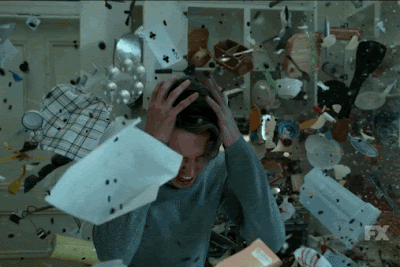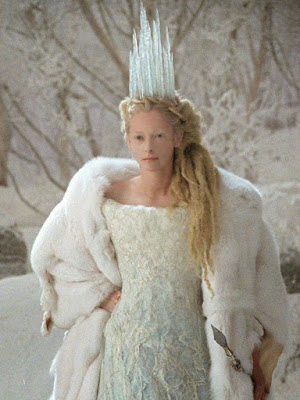copyright 2008 by Gary L. Pullman
The four primary elements of fiction are plot,
character, setting, and theme. Associated with most of these is a cluster of
related components: plot is divisible into exposition, inciting moment, rising
action, turning point, falling action, moment of final suspense, and (depending
upon whether the narrative is a comedy or a tragedy) resolution or catastrophe.
Of course, all plots are also derived from, and
developed upon, conflict. Likewise, setting is not merely a matter of a
specific time and place, but it also entails the particular cultural milieu
that exists in this particular time and place. Victorian London, for example,
is quite different than nineteenth-century Tombstone, Arizona.
Similarly, character involves motivation, various
personality traits, and, usually, interrelationships among several fictional
persons. Only theme is simple, rather than complex, having no subordinate
constituents.

Since any of these four elements is a potential
starting point for a story, a writer may generate an idea for a story by
considering plot, character, setting, or theme. Some writers, among them both
C. S. Lewis and Stephen King, have been inspired by mental images of characters
in specific situations or settings.
C. S. Lewis specified the image of a fawn, or satyr,
carrying an armload of parcels, as the mental picture that launched The
Chronicles of Narnia, and Storm of the Century, King says, began
with his imagining a strange man incarcerated in a jail cell.
The placement of a character in a particular situation
or setting is not a story, of course, but it is (possibly) the beginning of a
story that could start by considering an interesting character. It is the
starting point from which a series of questions can begin to be asked. The
choice of a protagonist or an antagonist can also suggest, or even determine,
the story’s counterpart as well. Once William Peter Blatty decided upon a demon—maybe
Satan himself—as his story’s antagonist, an exorcist became the most logical
choice of a protagonist. (Although The Exorcist is said to be based upon
a true story, Blatty, as an author of fiction was free to select a character
other than a priest as his protagonist, had he wished to do so; fact does not
determine fiction, even when the latter is based upon the former.)
Dean Koontz says he begins many of his stories by involving
a character in a bizarre situation that compels him or her to react to the
incidents that ensue therefrom.
Many of Jesus’ parables begin as answers to his
disciples’ questions concerning the meaning of the law or of right conduct in
regard to particular situations. They are stories told, in other words, to
impart wisdom. Their purpose is not primarily to entertain, but to instruct.
Therefore, they originate as a means for expressing, in concrete terms,
abstract ideas or values. They are theme-driven.
The Parable of the Prodigal Son illustrates the
meaning of forgiveness. The Parable of the Good Samaritan shows the meaning of
loving one’s neighbor. The Parable of the Mustard Seed shows the meaning of
faith.
Horror stories, as cautionary tales, also often drive
home a theme. Beowulf teaches the destructive and deadly effects of
intertribal vengeance. The Shining shows the terrible consequences of
self-absorption, self-indulgence, and child and spousal abuse. Cujo is
not only about a rabid dog, but also about the devastating effects of adultery
upon one’s marriage and family.
Sometimes, a setting will suggest a story. It is no
accident that many horror stories take place in isolated environments, total
institutions, or confining spaces. What other monster but the strange
troglodytes could have inhabited the cavern into which, as if into Satan’s maw,
the female spelunkers enter in The Descent? What better foe could
beachgoers encounter in the finny deep than the gargantuan white shark with
which Peter Benchley confronts his readers in Jaws? Likewise, the rain
forest in which Special Forces soldiers first encounter the camouflaged
extraterrestrial in Predator fairly cries out for such a monster as its
antagonist.
Edgar Allan Poe’s essay, "The Philosophy of
Composition," is the quintessential document, perhaps, alongside
Aristotle’s Poetics, for the point of view that it is the plot that
matters more than other elements (a point not always conceded by other
authorities).
Poe argued that a writer should commence not at the
beginning of his or her story but, on the contrary, with its end, working
backward in determining the sequence of actions and other details that will
best lead, inevitably, toward the narrative’s climactic finale, using his own
narrative poem The Raven as an example of the process.
Many writers share Aristotle’s and Poe’s respect for
plotting, so much so that they find themselves at a loss to put pen to paper
(or, more commonly, finger to keyboard) until they have plotted the whole tale,
from “A” to “Z.” (Others, such as Mark Twain, write the same way that the Who’s
“Pinball Wizard” plays his game, blindly, as it were, purely “by inspiration.”)
The fact that a writer can generate a story from any
of the four primary elements of fiction quadruples his or her opportunities for
inspiration. It does more than this, however: it also provides the writer with
a way of considering, and deciding, which element he or she wants to emphasize.
The author must consider whether the story highlights
an individual’s actions in the face of fate (plot); personal limitations,
abilities, and will (character); the effects of time, place, and culture on the
understanding and development of character and the limitations imposed upon one
by his or her environment (setting); or the lesson that the main character
learns as a result of his or her experience, as recounted in the story (theme).
The choice that the writer makes at this initial point
will affect the story as a whole and how the reader understands the tale. In
this sense, four possible stories confront the writer, and he or she must
choose which of the four to tell.
For horror story writers, Poe suggests a solution to
this dilemma: pick the element that will best sustain and heighten fear and trembling.
After all, that’s what horror is all about.





















